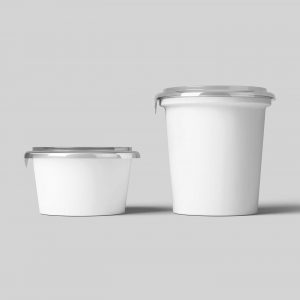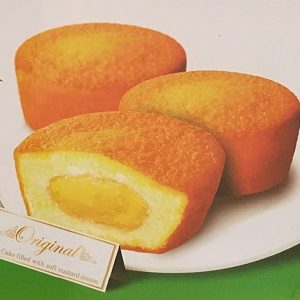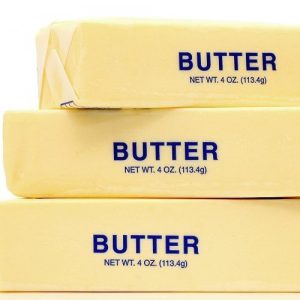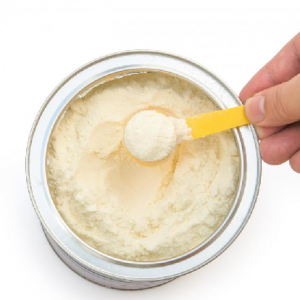What we have:
- Flavours for pasteurized and UHT milk.
- Flavours for stirred, set and drinking yogurts, etc.
- Flavours for dairy desserts such as custards, mousses, and gelatin desserts, etc.
- Flavours for butter and cheese products and margarine, etc.
- Flavours for powdered milk, nutritious powders, sweetened condensed milk, etc.
- Flavours for ice-cream and sorbets, etc.
Some applications:
We provide flavours for both types of milk: Pasteurized and UHT

Pasteurization milk
Pasteurization milk is a simple heating and cooling process, discovered in the 19th century, that makes all milk safe to drink.

UHT Milk
Milk that has been heated to a very high temperature to preserve it
Any kinds of yogurt

Stirred-style yogurt
Made from fermenting milk into jacketed fermentation tank. After fermentation, the content will be stirred and added fruit and flavour into it. Then, stirred yogurt is cooled, packaged, and stored at refrigeration temperatures.

Set-style yogurt
Set-style yogurt as known as French style, the milk is inoculated with ferments and added with other ingredients (fruit preparation, sugar, flavours…) before packaging. The fermentation process occurs in packages during the incubation period after which the product is cooled and stored at refrigeration temperatures.

Drinking yogurt
Drinking yogurt is stirred yogurt that has a low total solids content, and which has undergone homogenization to further reduce the viscosity. Sweetener, flavouring and coloring ingredients may then be added, and the product is packed in bottles.

Greek yogurt
Greek yogurt: is traditionally obtained by straining normal yogurt, which gives it a thicker texture.
Dairy desserts

Custard
Custard: a variety of culinary preparations based on milk or cream cooked with egg yolk to thicken it, and sometimes also flour, corn starch, or gelatin.

Mousses
Mousse is a soft prepared food that incorporates air bubbles to give it a light and airy texture. It can range from light and fluffy to creamy and thick, depending on preparation techniques. A mousse may be sweet or savory.

Gelatin desserts
Gelatin dessert: is made with sweetened and flavoured gelatin. They can be made by combining plain gelatin with other ingredients or by using a pre-mixed blend of gelatin with additives. Fully prepared gelatin desserts are sold in a variety of forms, ranging from large decorative shapes to individual serving cups.
Butter, Cheese & Margarine:

Butter
A pale yellow edible fatty substance made by churning cream and used as a spread or in cooking.

Cheese
Cheese is a food product made from cheese and other unfermented dairy ingredients mixed with emulsifiers. Additional ingredients, such as vegetable oils, salt, food coloring, or sugar may be included.

Margarine
A butter substitute made from vegetable oils or animal fats.
Other types of Milk products:

Powdered milk
Powdered milk or dried milk is a manufactured dairy product made by evaporating milk to dryness. One purpose of drying milk is to preserve it; milk powder has a far longer shelf life than liquid milk and does not need to be refrigerated, due to its low moisture content. Another purpose is to reduce its bulk for economy of transportation.

Nutritious Powders
Nutritious Powder or Protein powder is a popular nutritional supplement. Protein is an essential macronutrient that helps build muscle, repair tissue, and make enzymes and hormones. Using protein powder may also aid weight loss and help people tone their muscles

Condensed milk
Sweetened condensed milk: (Cookery) milk reduced by evaporation to a thick concentration, with sugar added.

BUTTERMILK
BUTTERMILK was the liquid left behind after churning butter out of cream.

MILK KEFIR
MILK KEFIR: a probiotic beverage, is made with cow’s milk, goat’s milk, or coconut milk and a starter culture, such as KEFIR GRAINS.
Various categories within Ice Cream:

Ice Cream
Ice cream is made of milk, cream, sugar, and sometimes egg yolks (French style). The ingredients are cooked together, cooled, and churned at a fairly high speed to incorporate air and increase its volume. Ice cream is served at a fairly cold temperature that makes scoops hold together, and the finished product is smooth, light-textured, and creamy.

Gelato (Italian style):
Gelato (Italian style): The custard base is similar to ice cream’s, but has a higher proportion of milk and a lower proportion of cream and eggs (or no eggs at all). It is churned at a much slower rate, incorporating less air and leaving the gelato denser. Gelato is served at a slightly warmer temperature, so its texture stays silkier and softer. Because it has a lower percentage of fat than ice cream, the main flavor ingredient really shines through.

Sorbet
Sorbet: sorbet and sherbet are dairy free alternatives. Their milk fat content is between 1 and 2 percent with a slightly higher sweetener content than ice cream.
Sorbet contains just fruit and sugar – no dairy

Sherbet
Halfway between sorbet and ice cream, sherbet is basically sorbet with a bit of milk added. And it is always fruit-based.
Viet Huong's Dairy & Ice Cream Flavours:

If you have any additional questions or require further clarification, please, do not hesitate to call us or send us an email.
Contact us:
Hotline: (028)3 551 2778 (ext: 201)
Discover about Dairy products:
The global dairy market is projected to grow with a CAGR of 5% over the forecast period (2020 – 2025).
Key market trends for dairy market will include:
- Lactose-free Dairy Products are Expected to Drive the Market Growth: In the United States, Europe, and China, more than 5%, 10%, and 90% of the population are intolerant to lactose, respectively. In these markets, lactose-free dairy products are witnessing immense popularity. There is a significant increase in the number of lactose-free products. Products with less lactose content and lactose-free dairy products, such as yogurt, milk, and cheese, are gaining traction in the market studied.
- Developing Countries are Contributing to the Market’s Growth: The sale of dairy products in the developing countries of the Asia Pacific Region and the European region accounts for more than 50% to global sales. In the Asia-Pacific region, India dominates the market, followed by China, and Australia, whereas in the demand in the European region is driven by countries such as Belarus, and Ukraine. Furthermore, factors, such as efficient and sustainable dairy production in these countries are impacting the global market’s growth.
Source: Dairy Market – Growth, Trends, and Forecast (2020 – 2025) https://www.mordorintelligence.com/industry-reports/dairy-products-market
The Global Ice Cream Market is growing at a CAGR of 4.9% during the forecast period (2020-2025).
Global key market trends:
Product Innovation is leading the Ice Cream Market
Product innovation can make Ice cream a luxury product. The ingredients added, texture, color, flavor, packaging, the technology used, the circumstances of the purchase and consumption, all these contribute to a premium product. Children are the major consumers of Ice cream; thus, companies are producing products as per the interest of children
North America Being the Largest Market for Global Ice Cream Industry – The rise in income along with an increased indulgence for sweet dishes drives the growth of this market. Unilever dominates the global market followed by Nestle
Source: https://bwnews.pr/3lXdkmD
The Vietnam Ice Cream market has been recording a CAGR of 8% since 2010. The Take-Home Ice Cream category has shown the highest growth since 2010 with a CAGR of 8.67%, and surpassed volume consumption of 3.777 Mn liters in 2018. The Dairy Based-Single Serve segment is expected to dominate the Take-Home Ice Cream sales during the forecast period. Specialist Retailers remain an important distribution channel for the Ice Cream sales. (According to Vietnam Ice Cream Market Analysis 2013-2023, link)
Dairy remains a market for PLEASURE and HEALTH.
Drinking yogurts and milk-based beverages continue to play a key role in the healthy snacks aisle, as dairy products are predominantly associated with health related claims.
As consumers are much more aware and educated about nutrition and concerned about long-term health, there is a surge in demands for cleaner recipes: Less sugar, low fat, high in protein, probiotics, ancient seeds and cereals…
Despite the boom in “health and wellness” food products, gourmet dairy products continue to attract consumers of all generations.
Exotic fruits, especially Mango, are among the most popular flavours used in smoothies and drinking yogurts.
The dairy market is constantly evolving in order to meet new consumers’ expectations, in particular for products enriched in probiotics.
1 in 3 global consumers pay attention to health aspects when buying dairy products, increasingly looking for personalized nutrition. (Innova Consumer Survey, 2018)
According to Innova Market Insights, Protein claims continue to strengthen in dairy products: +31% in North America; +25% in Asia and Middle East/Africa; +20% in Europe*.
For children, fairly classic flavours but healthier recipes with more fruits and vitamins, and less sugar and fat.
Dairy manufacturers continue to tap into trends like provenance, locally-sourced and authentically-made.
The mindful consumer is looking for wholesome solutions good for themselves while at the same time avoiding harming our planet.
It is clear that seasonal, limited-time offers create excitement in the dairy category. products featuring sophisticated flavours evoke a sense of exclusivity.
Despite the ubiquitous focus on health and wellness in the food and beverage industry, purely indulgent dairy is not lacking from new product launches.
Consumer’s demand for something new and different is being reflected in more product launches with textural claims: smooth, creamy, mousse, liégeois…
Consumers increasingly recognize the influence of texture, allowing a heightened sensory experience and often a greater feeling of indulgence.
Recent introduction of more complex blends such as chobani’s vanilla greek yogurt with cashew butter indicates the consumer’s preference for healthy indulgence.
Indulgent varieties of greek and strained yogurt offer an “almost” healthy dessert with low-fat and high protein content.
Cow’s milk alternatives remain an interesting niche in the dairy products market focusing on local ingredients and authentic recipes.
As parents are facing concerns about long-term health for their children, dairy continues to play a key role in the snack aisle.
Butter is an emulsion of water dispersed in fat. it is a product made from the solid components in milk (fat and protein).
Different kinds of butter are available depending on the process.

Although most often made from cow’s milk, butter can be made out of milk from sheep, goat, buffalo, or other mammals.
Butter is making a comeback in a range of food and beverage products. with growing acceptance that butter may actually be good for you, companies are increasing their new developments.
Savoury flavours: Butter’s recent resurgence may be partially due to a growing interest in what are considered real, authentic foods. the use of sophisticated ingredients such as truffle enhances the authenticity.
Sweet flavours butter is great on waffles, pancakes and toasts. for example, land o lakes is an american agricultural cooperative offering various flavoured buttery spreads.
For the past couple of years, seaweed has gained importance in various fields from food to medical. they are most commonly eaten in asian countries but also scandinavia, great britain and ireland.
Adding cream cheese or yogurt to create an indulgent and creamy experience. or, you may want to add seeds to offer an innovative sensory experience with a healthy halo.
Compound Butter: You can mix anything into butter and create a COMPLETELY NEW THING. The internet and social medias are packed with DELICIOUS & INNOVATIVE IDEAS. Down below are some example of interesting flavours to use in butter.
